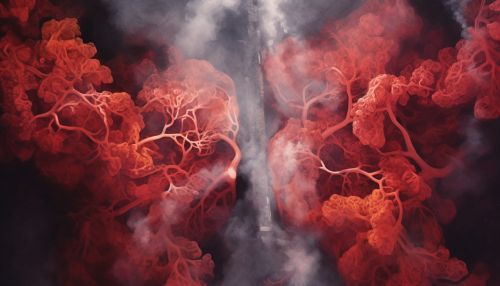Pulmonary embolism
Definition and Overview
A pulmonary embolism (PE) is a blockage in one of the pulmonary arteries in the lungs. In most cases, pulmonary embolism is caused by blood clots that travel to the lungs from the legs or, rarely, other parts of the body (deep vein thrombosis).


Causes
Pulmonary embolism occurs when a clump of material, most often a blood clot, gets wedged into an artery in the lungs. These blood clots most commonly come from the deep veins of the legs, a condition known as deep vein thrombosis (DVT). In many cases, multiple clots are involved in pulmonary embolism. However, not all clots that form result in pulmonary embolism.
Risk Factors
Certain factors can increase the risk of developing blood clots that can eventually lead to pulmonary embolism. These include prolonged immobility, certain surgeries, certain medical conditions, smoking, and certain genetic conditions.
Symptoms
The symptoms of pulmonary embolism can vary greatly, depending on how much of the lung is involved, the size of the emboli, and the patient's overall health — especially the presence or absence of underlying lung disease or heart disease. Symptoms may include shortness of breath, chest pain, or coughing up blood.
Diagnosis
Diagnosing pulmonary embolism can be difficult because the symptoms are like those of many other conditions, such as heart disease. If a doctor suspects that a patient has a pulmonary embolism, they may order one or more of the following tests: blood tests, chest x-ray, ultrasound, spiral CT scan, or pulmonary angiogram.
Treatment
Treatment aims to prevent the clot from getting bigger and to keep new clots from forming. This can be done by administering anticoagulants, thrombolytics, or in some cases, surgical intervention.
Prevention
Preventing clots in the deep veins in the legs (deep vein thrombosis) will help prevent pulmonary embolism. This can be done by taking measures to prevent blood clots, such as taking anticoagulants, wearing compression stockings, and getting regular exercise.
